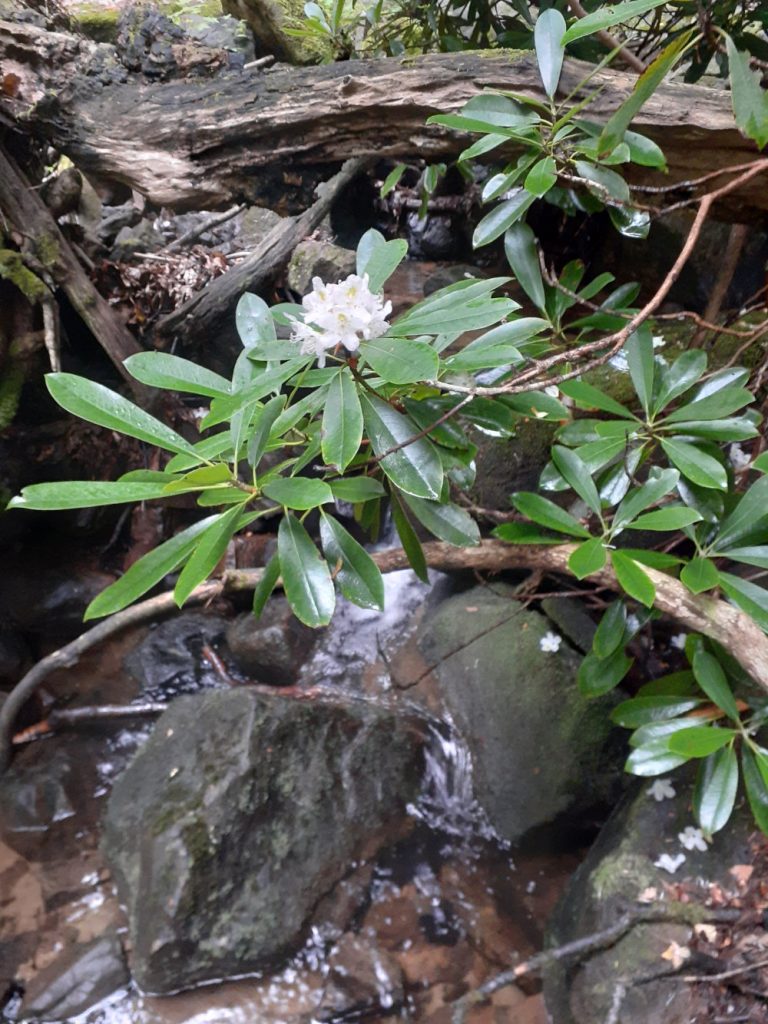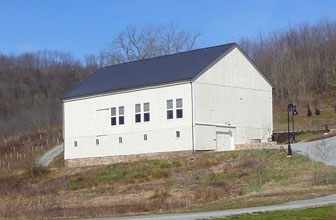Category: Citizen Science
Rock Run Water Tests - Summer 2025

With 8 years of data collected, we have decided to do water sampling quarterly instead of monthly. We may eventually include Linn Run in our sampling as well.
Results for summer 2025 collected on June 29th are as follows:
Air Temperature – 70° F
Water Temperature – 65°
Linn Run Gauge – 1.92′
Linn Run Discharge – 14.2 ft³/sec
pH – 7.2
Alkalinity – 7.7
Rock Run Water Tests for March 2025

Air Temperature: 34° F
Water Temperature: 37.5° F
pH: 7.1
Alkalinity: 6
Linn Run Gauge: 2.11 ft
Linn Run Discharge: 25 ft³/sec
Rock Run Water Test Results for February

The citizen scientists were out on a cold Saturday morning collecting water samples at the mouth of Rock Run.
Air Temperature: 26° F
Water Temperature: 34° F
Linn Run Flow: N/A
Linn Run Discharge: 4.66 ft³/sec
pH: 6.7
Alkalinity: 4.8
Conditions: High and Clear
Melting snow and rain brought up the flow which usually brings the alkalinity down but it was only down slightly from January. Although 4.8 is still considered low alkalinity, we no longer are noticing downward spikes of 1.5 with high water.
Soon we will begin testing the headwaters of Linn Run before and after placement of limestone sand there.
Rock Run Water Tests 1.4.24

“Neither snow nor rain…” the saying goes. The FTTU citizen scientists kicked off the new year on a bitter cold day at Linn Run State Park. Several inches of snow and 16 degree temperatures greeted the testers making conditions difficult for conducting water tests.
The Results:
Air Temperature: 16°F
Water Temperature: 31°F
Linn Run Gauge: 1.87′
Linn Run Discharge: 4.66 ft³/sec
pH: 7.1
Alkalinity: 5.4
Rock Run Water Tests 12.4.24

Here’s the results of Rock Run water tests from the last month of 2024.
Air Temperature – 35° F
Water Temperature – 36.5° F
pH – 7.0
Alkalinity – 6.7
Linn Run Gauge – 1.87′
Linn Run Discharge – 4.49 ft³/sec
Good to see Rock Run and Linn Run back to normal flows.
Here are the final results of another year of water quality testing at the mouth of Rock Run.
Rock Run Water Tests 11.2.24
Results of water tests done on Rock Run on Saturday November 2, 2024
Air Temperature – 41°
Water Temperature – 49°
pH – 7.1
Alkalinity – 11.2
Linn Run Gauge – 1.43 ft
Lin Run Discharge – .62 ft³/sec

Rock Run Water Tests for September 28, 2024

Results of water tests done at the mouth of Rock Run on September 28, 2024 at 3:00 pm:
Air Temperature – 73° F
Water Temperature – 64.5° F
pH – 6.9
Alkalinity – 12.8
Linn Run Gauge – 1.43′
Linn Run Discharge – .62 ft³/sec
Despite some spotty rain. water levels are at all time lows since we started testing in 2018.
Rock Run Water Tests September 2024

Here are the results of monthly water tests from September 4, 2024.
Air Temperature – 68° F
Water Temperature – 59.5° F
pH – 6.8
Alkalinity – 11.2
Linn Run Gauge – 1.45′
Linn Run Discharge – .88 ft³/sec
Some much needed rain came through, but Linn Run gauge and discharge were the same as last month.
Rock Run Water Tests 7.30.24

Results of water tests at the mouth of Rock Run on July 30, 2024.
Air Temperature: 70° F
Water Temperature: 65° F
pH: 7.13
Alkalinity: 9.6
Rain is needed desperately. The flow in Linn Run’s headwaters is just a trickle.
The USGS gauge at Linn Run was at 1.45′ and the discharge was .88 ft³/sec. This is the lowest reading we’ve had in 5 years of keeping records. This is still not a record. According to the USGS website, the lowest discharge was .16 ft³/sec recorded in 2012.
Contrast this with April 3rd of this year when the stream was flowing at 454 ft³/sec and the gauge measured 3.79′.
Rock Run Water Test Results

Monthly water quality tests were done at the mouth of Rock Run on June 30, 2024
Air Temperature – 72°
Water Temperature – 65°F
Linn Run Gauge – 1.63′
Linn Run Discharge – 4.57 ft³/sec
pH – 7.2
Alkalinity – 7.0


